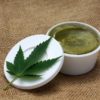Medical
Why Vaping May Be Safer Than Smoking
Some cannabis consumers— particularly medical cannabis patients — are worried that the high heat might be exposing them to harmful chemicals.
Until recently, consuming cannabis was invariably associated with combustion. Rolling a joint and sharing it with friends is a time-honored ritual that even our president enjoyed in his younger days. Smoking is simple and direct; all you need is a pipe or some rolling papers, herb and something to ignite it. (As Stephen Colbert reports, enterprising tokers can “MacGyver” a pipe out of just about any household item.)
But combustion is a rather rapid and violent chemical process and as the health hazards of smoking cigarettes became evident, some cannabis consumers— particularly medical cannabis patients — are worried that the high heat might be expose them to harmful chemicals along with their therapeutic medicine.
In 2007 the University of California at San Francisco conducted a study to compare the delivery of cannabinoids via vaporization to marijuana smoked in a standard cigarette.
“We showed in a recent paper in the journal ‘Neurology’ that smoked cannabis can alleviate the chronic pain caused by HIV-related neuropathy, but a concern was expressed that smoking cannabis was not safe,” wrote study lead author Donald I. Abrams, MD, a UCSF professor of clinical medicine. “This study demonstrates an alternative method that gives patients the same effects and allows controlled dosing but without inhalation of the toxic products in smoke.”
Study co-author Neal L. Benowitz, MD, a UCSF professor of medicine, psychiatry and biopharmaceutical sciences, added, “Using CO as an indicator, there was virtually no exposure to harmful combustion products using the vaporizing device… This device has great potential for improving the therapeutic utility of THC.” Participants in the study rated the “high” similar to smoking.
“By a significant majority, patients preferred vaporization to smoking, choosing the route of delivery with the fewest side effects and greatest efficiency,” Benowitz wrote.
Vaporizing vs. Smoking Marijuana
Unlike combustion, which releases all of the psychoactive chemicals simultaneously along with potentially harmful chemicals, vaporization is intended to incrementally heat herb to a temperature below combustion. This allows the active ingredients to be released gradually while avoiding the potentially toxic byproducts of combustion.
Aromatic terpiniods begin to vaporize first, at 119°C (246°F), but more bioactive components don’t vaporize until they approach their respective boiling points: 157°C (315°F) for tetrahydrocannabionol, or THC; 160-180°C (320-356°F) for cannabidiol (CBD); and 185°C (365°F) for cannabinol (CBN). Toxins are released at higher temperatures: benzene at 200°C (392°F) and at the point of combustion, carbon monoxide and smoke tars at 230°C (446°F).
It is important to note that these chemicals are not vaporized in isolation. Vapor starts to form well below the boiling point of the compounds and the boiling point is the temperature beyond which the compounds are completely vaporized. Also, the compounds are initially combined in a matrix that is broken down by heat, which affects the vaporization temperatures. Although you cannot isolate a compound by controlling the temperature, you can alter their ratio to one another. At 160°C, for example, you get more THC than CBN or CBD, but you don’t get just THC.
Originally published in issue 7 of Cannabis Now as “CannaTech: Why Vape?” LEARN MORE.























